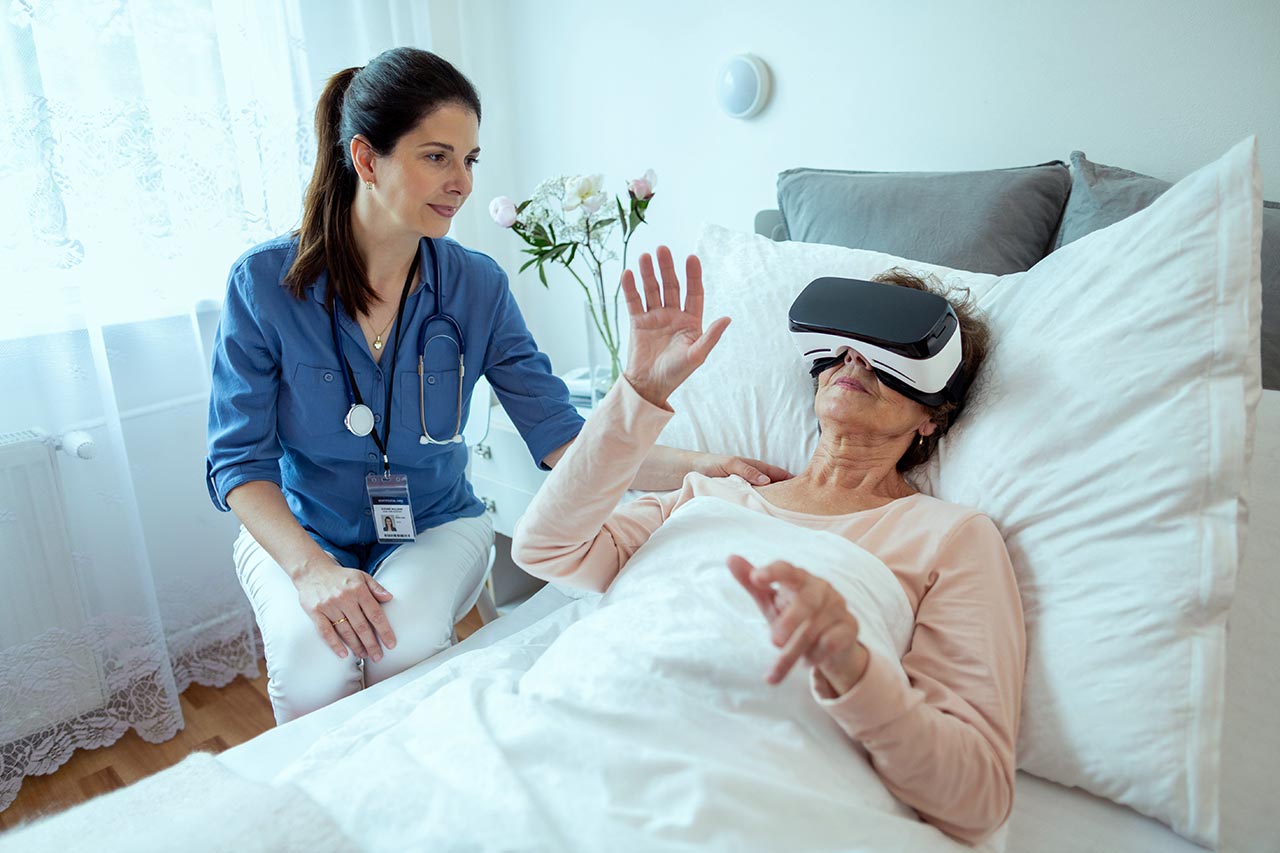Collaborative networks for the pharma industry: new business models to create value
Building collaborative networks ought to be a key task for every company in the pharmaceutical industry. Due to the connectivity within a network, compatible or even common goals are to be achieved with lower costs than attempting it individually. Both, knowledge search and transfer are facilitated.
The collaborative approach indicates to create collaborative business models from the very beginning. Within collaborative networks, business models of individual organizations should be designed to include each other and be easy to expand. A network that enables the sharing of activities linked to R&D, manufacturing, logistics and marketing. It is about creating a system where data, raw materials and new products can be transferred quicker and more efficiently in between organizations.
The innovation force of specialized organisations as well as start-ups should be considered and included in the different stages from research and development to marketing and sales. Engaging with more specialised organizations in the network opens the possibility to access the resources of many different actors in the pharmaceutical industry and beyond.
In research and development, the collaborative approach allows pairing the core value proposition – the pharmaceutical drug – with technological solutions in terms of prevention, diagnostic solutions and treatment. Collaborating with biotechnology, medical technology and healthcare providers serves as a value creation network, which focuses on the need of the patient.
In marketing and sales, the possibility of virtual-shared programs, virtual-shared contractors [1] or even shared clients reduces costs and enhances niche productivity and the involvement of diverse players. Furthermore, interdisciplinary cooperation and support between specialized actors is increasingly necessary. Big Pharma players are usually highly specialized in their core competencies. However, to cover the broad variety of interdisciplinary and digital activities along the value chain, the specialization of start-ups and their ability to take higher risks and learn from their mistakes faster is a brilliant lever to use.
Furthermore, there are even opportunities for collaborations with industries beyond pharma and life sciences. The start-up scene is making use of applying newest technologies in established markets to give birth to specialised business models. The trend of VC investments in healthcare-AI is rising higher than any other sector in the Silicon Valley.
The following examples illustrate an initial approach how collaborative networks, and corresponding business models can look like to be profitable for pharma!
Example #1 – The company builder: RoX Health
As a Roche subsidiary, RoX Health was founded in March 2020 for helping company-intern digital health applications (DiGA) to enter the market of standard care. Further, they support both external founders and start-ups in the digital health sector in establishing their business models, certificating their applications and as a final step entering the health market. With expertise in the fields of evaluation, reimbursement and commercialization, their medical focus lies in therapeutical as well as preventive solutions.
Collaborative approach
At RoX Health, self-generated projects are realized as well as projects brought in from the outside. This means on the one hand, the team is working with trending topics from Roche, to develop their ideas and already existing technologies further and generate knowledge for in-house profit. On the other hand, their expertise and advice is provided to non-corporate start-ups. These collaborations can take place from the concept to the first prototype or business model until the roll-out and everything in between. In both cases – internal and external projects – the ultimate objective is the listing as a DiGA and the go-to-market of standard care. Regarding the support for non-corporate start-ups, besides the capital of the Roche venture fund, Roche also offers to become shareholder of promising start-ups.
Key learnings for collaboration in pharma
The company builder enables the transfer of learning not only between the employees of the company builder and the founders and start-ups, but also between the internal and external founders and start-ups guided from them. The open innovation approach promises a divers learning-environment, which could become the initial spark for the start of a public network, where everyone willing can be a part of.
Example #2 – The databased business model: heartbeat
Heartbeat, as a healthcare actor, offers digital solutions with Patient Reported Outcome Measures (PROMs) for several medical areas to validate treatments. The business model is developed to offer individual software solutions for clinics and doctors either for fee-for-service, or for packages with a set amount of reimbursement. With standardized and validated questionnaires filled in by the patient, treatment impacts and long-term health issues are derived. They enable databased, sustainable patient care for clinicians and hospitals and provide data for other life science industries.
Collaborative approach
The PROMs in hospitals favour the process of digitization of clinical workflows. They deliver an overview of the recovery of individual patients, therefore promote the quality of an entire facility, and build the foundation for medical and economic decisions. Regarding the patients, they are highly involved in their treatments.
Patient Reported Outcomes (PROs) in the field of Life Sciences support the life science industry in the development of high-quality products and services customized for the patient. Real World Evidence helps pharmaceutical and medtech companies to fulfil regulatory requirements and in addition provides resources for clinical trials. Further, patients gain more insights and therefore a wider understanding about their health conditions. Ultimately, the quality of treatments determines the quality of life.
Key learnings for collaboration in pharma
The combination of patients´ participation and the use of their data as a key activity and the establishment of several customer segments displays a model with the demand on and the potential for a focal position in a highly intertwined ecosystem. This business model itself portraits the ideal node in a collaborative network for the interoperability of systems.
Example #3 – The ecosystem business model: Waymo
Waymo is a company that develops technologies for autonomous driving. Founded as a subsidiary in 2009, Waymo spins off under Alphabet as a self-driving technology company with a mission to make it safe and easy for people and things to be transferred. Alphabet operates according to the motto “AI first”.
Collaborative approach
In 2009, the “Google self-driving car project” started and after more than 300.000 driven miles, the project spin of as Waymo in 2016. Still, Google employees were invited to start early testing of the autonomous technology on highways. They were the first in the world to take a fully self-driving ride on a public road in 2015. Waymo partnered among others with the car manufacturer FCA to expand the fleet. While the hardware suit of the vehicle is designed by Waymo, the rest of the car is mass-production. Followed by the first public trial of self-driving vehicles in Phoenix and the launch of Waymo One in 2019, by now, Waymo is expanding its public driving service to logistic transports. Moreover, they begin to work with German companies like Bosch to expand their business.
Key learnings for collaboration in pharma
The ecosystem approach, which has developed from a business ecosystem around Alphabet and Google, could be a role model for Pharma. Especially the achievement of aligning multilateral partners and organizing their interactions, proofs of a successful ecosystem strategy. Among Waymo, they support Artificial Intelligence research via Deepmind, the start-up Calico is researching methods against human ageing, SideWalk is into Urban Innovation and GV is a Venture Capital just to name a few in the ecosystem. The collaborative network is significantly involved in the success of Waymo. It inspires to recognize and manage direct and indirect links between actors in pharma and beyond. In terms of indirect links, the focal actor has to extend the (general) strategic view in order to include activities and actors over which they may have no control and with whom they have no direct contact. There is a transfer happening across actors in the ecosystem, which might not always include the focal firm, but of which they should be aware.
Adding value beyond the pill: to conclude
Share learnings and data
Combining the core value proposition with new digital technologies and solutions extends the pharma-portfolio. The ‘company builder’ model as well as the databased model are an example of how this extended range of services and products might be attachable. Launching digital health applications to serve in the fields of prevention and diagnostics as well as in treatments might be a major step. Monitoring specific treatment procedures – the patient as the end-customer is the centre of attention. In return, due to the exchange of data from the patient, pharma gets valuable insights to share with their network to continuously improve the process of healthcare. The opening for interoperability is key to simplify the exchange of learnings and data to improve the availability of health data.
Interdisciplinary ecosystems help in value creation
The actors and their activities in an ecosystem need to be linked with each other through their business models. Thus, value creation processes need to become more intertwined in order to include specialized partners in the value creation process and speed up the reactivity to adapt faster to changing needs in the environment. However, the relationships, which display specific transfers among actors in ecosystems, are not only to maintain within the same but across industries, as the example of Waymo demonstrates. Intersectoral and interprofessional collaborations are inevitable.
Promote open-minded entrepreneurial spirit
It is essential to promote the corporate entrepreneur-spirit continuously. The start-up sector is highly connected, with access to and knowledge of the newest and most innovative communication software, technology and funding. Be aware, that communication, decision and business cycles of small start-ups highly deviate from the ones in large firms. The corporates should do the effort to invest in options to adapt to the faster changing needs of start-ups, in order to create a successful collaborative network.
[1] Cloud-based platforms shared with external service providers and other players to both, collect and share data and develop strategies for marketing and sale purposes, e.g. to start a social media campaign with social influencers.
[2] Evaluation of care outcomes.
About the authors,
Karla Gehde, Researcher at University Münster (Germany), Institute of Business Administration at the Department of Chemistry and Pharmacy
Dr. Sebastian Eidam, Project Manager in Alcimed’s Healthcare team in Germany



